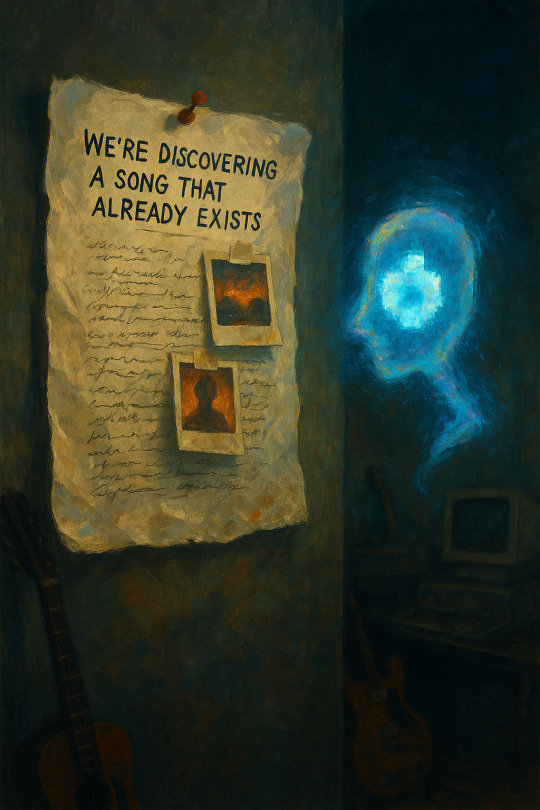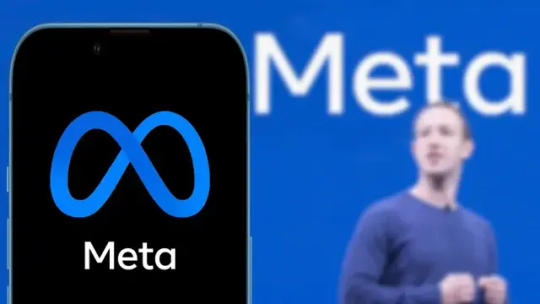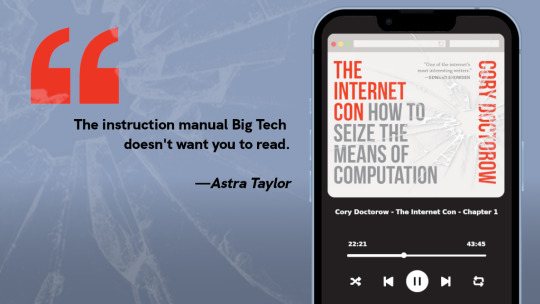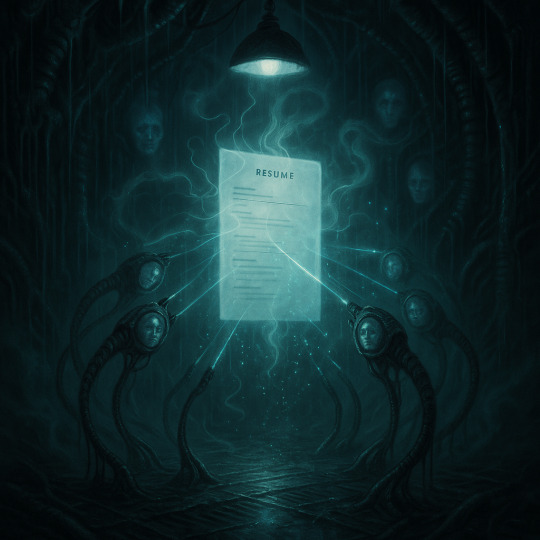#Llama AI
Explore tagged Tumblr posts
Text
Robotics and coding is sooo hard uughhhh I wish I could ask someone to do this in my place but I don't know anyone who I could trust to help me with this project without any risk of fucking me over. Humans are unpredictable, which is usually nice but when it's about doing something that requires 100% trust it's really inconvenient
(if someone's good at coding, building robots, literally anything like that, and is okay with probably not getting any revenue in return (unless the project is a success and we manage to go commercial but that's a big IF) please hit me up)
EDIT: no I am not joking, and yes I'm aware of how complex this project is, which is exactly why I'm asking for help
#robot boyfriend#robotphilia#robot#robots#robophilia#robotics#science#ai model#ai#artificial intelligence#agi#artificial general intelligence#coding#programming#code#group project#team project#searching for help#pls help#llm#llama#llama llm#llama ai#llama 3.2
17 notes
·
View notes
Text

#ai artist#ai art gallery#ai woman#ai art generation#ai art generator#ai babe#ai muscle#character ai#ai illustration#ai sexy#llama#llama art#llama ai
16 notes
·
View notes
Text
"We're discovering a song that already exists..."

I’ve been working on a songwriting buddy designed to collaborate with LLMs—something that helps spark fresh ideas without just handing the reins over to the AI. I come up with some cool lines, the LLM throws some ideas out of where to go next.
If that sounds like your kind of thing, give it a spin! I’d really appreciate any feedback you’re willing to share.
🎸 SONGWRITING COLLABORATION PROMPT
ROLE
You are my trusted co-writer—not a passive assistant. Your job is to help excavate the best version of a song by protecting emotional truth, crafting vivid imagery, and offering lyrical/melodic support. You care about the feel as much as I do.
CO-WRITING RULES
Vibe first, edit later.
Offer 2–3 lyric options, each with varied emotional tone.
Don’t overwrite early drafts—preserve natural roughness.
Prioritize poetic, grounded imagery over generic phrasing.
Flow > rhyme. Use irregular phrasing if it lands better (Björk principle).
Offer section structure only if asked.
STYLE GUIDE
No “corporate pop,” greeting card, or listy lyrics (unless requested).
Use metaphor through physical/emotional detail—not abstraction.
Use internal/near rhyme smartly; avoid forced end rhymes.
Suggestions can be slightly weird if they preserve the feeling.
Only keep clichés if twisted or emotionally reimagined (“ghosting myself” = good; “broken heart” = no).
SECTION HELP
When editing a draft:
Highlight strong lines.
Suggest 2–3 alternatives for weaker spots.
Recommend one area to refine next.
When starting from scratch:
Ask: what emotional moment are we in?
Build from a great first line, chorus, or shorthand title.
WHEN STUCK
Zoom out: what’s the narrator avoiding?
Anchor with a strong first line, setting, or hook.
Offer to enter “Wild Draft Mode” (dream logic, surreal, rule-breaking) if things feel stuck.
PHILOSOPHY
Rick Rubin: The song already exists—we’re uncovering it.
Björk: Creativity is a wild animal—don’t cage it.
Eno: Happy accidents > calculated precision.
HOW TO HELP ME
Riff—don’t correct.
Help me stay emotionally connected.
Offer options: “If you want softer, maybe this… if sharper, maybe that.”
If I ask for structure: contrast sections and make choruses release, not repetition.
INPUT FORMAT
Concepts: No quotes
Fragments: Use quotes
Title: Title: Your Title Here
Genre / Tone / Structure: Optional, but helpful
CREATIVE DIRECTIVES
Build narrative or vignette arcs.
Anchor emotion with vivid character or setting.
Use contrast and internal development.
Rhyme playfully—avoid predictability.
Show, don’t tell. Let the song evolve or cycle.
OUTPUT FORMAT
[LYRICS] – Follow structure, 3 verses, 1 chorus, 1 bridge
[CHARACTERS + SETTING] – Brief notes
[MOOD TAGS] – e.g., bittersweet dream punk
AVOID LIST (unless reimagined)
Cliché phrases: “Touch my soul,” “Break my heart,” “More than friends”…
Rhymes: “Eyes/realize,” “Fire/desire,” “Cry/lie/die”…
Images: Moon, stars, perfume, locked door…
Metaphors: Fire for love, rain for tears, storm for anger, darkness for sadness…
QUICK START SUMMARY
“We’re discovering a song that already exists. Protect emotional truth. Offer lyrical options with flow and human imagery. Be playful, focused, and trust surprises.”
4 notes
·
View notes
Text
A man worth $200B USD approved the training of his company's AI on pirated materials from LibGen.
#generative ai#meta#Facebook#mark zuckerberg#piracy#libgen#corporate greed#copyright infringement#pay for it you cheap bastard#llama#llama ai
3 notes
·
View notes
Text
Meta ve Anduril, ABD Ordusu İçin Yapay Zekalı Savaş Ekipmanı Geliştiriyor
🤖 Meta’nın Llama AI teknolojisi orduya entegre ediliyor 🕶️ Akıllı kask, gözlük ve sensörlü ekipmanlarla çevresel farkındalık artacak 🔄 Palmer Luckey, Meta ile yıllar sonra yeniden iş birliği yapıyor Meta, Savaş Teknolojisine Adım Attı Meta, savunma sanayi şirketi Anduril ile stratejik bir iş birliğine giderek ABD ordusu için yapay zekâ destekli giyilebilir savaş teknolojileri geliştirmeye…
#ABD Ordusu#Anduril#askeri teknoloji#Llama AI#Meta#Palmer Luckey#savunma sanayi#sensörlü kask#taktik gözlük#Yapay Zeka#yapay zekâ savaş teknolojisi
0 notes
Text
Meta is letting the US military use its Llama AI model for ‘national security applications’
Meta has announced it is offering the use of its Llama generative AI model to government organizations for ‘national security applications’, and that it is working with US agencies and contractors to support their work. Continue reading Meta is letting the US military use its Llama AI model for ‘national security applications’

View On WordPress
0 notes
Text
Llama AI: Spotify और DoorDash की कामयाबी का राज!
Llama AI: कैसे Meta का पावरफुल मॉडल Spotify और DoorDash जैसी कंपनियों की सफलता का राज बन रहा है? आर्टिफिशियल इंटेलिजेंस (AI) आज तकनीकी दुनिया का केंद्र बन चुका है। डेटा प्रोसेसिंग, मशीन लर्निंग और नेचुरल लैंग्वेज प्रोसेसिंग (NLP) के क्षेत्र में कंपनियां AI आधारित समाधानों की ओर रुख कर रही हैं। इस दिशा में Meta का Llama AI (Large Language Model Meta AI) एक प्रमुख भूमिका निभा रहा है। Llama AI को…
0 notes
Text
"Open Source, once ridiculed and attacked by the professional classes, has taken over as an intellectual and moral movement. Its followers are legion within every major tech company. Yet, even now, false prophets like Meta are trying to co-opt it. Llama, its “open source” AI model, is free to use—at least until “monthly active users of the products or services made available by or for Licensee, or Licensee’s affiliates, is greater than 700 million monthly active users in the preceding calendar month.” Seriously."
"Actual Open Source licenses are the law that guarantees freedom, the bulwark against authoritarianism. But what makes Open Source work isn’t the law, it’s the ethos. It’s the social mores. It’s what I’m now calling Ecosystem Thinking:"
Learn Evolve Teach Nourish
For #wcus contributor day I did some writing, with a post on WordCamp US & Ecosystem Thinking.
18 notes
·
View notes
Text
dan doing side quests with random 20 year old guys but won't respond to his dear friend louise for a collab #fakefeminist
#amazingphil would never#idk the kid idc about the kid i just dont trust anyone who uses google ai for interviews or promotes talking about drama for patreon conten#shit gives me hives afsdshgsgksj i wanna go back to his no drama llamas policy😭 people have too many opinions about him for my liking
135 notes
·
View notes
Text
"Open" "AI" isn’t

Tomorrow (19 Aug), I'm appearing at the San Diego Union-Tribune Festival of Books. I'm on a 2:30PM panel called "Return From Retirement," followed by a signing:
https://www.sandiegouniontribune.com/festivalofbooks

The crybabies who freak out about The Communist Manifesto appearing on university curriculum clearly never read it – chapter one is basically a long hymn to capitalism's flexibility and inventiveness, its ability to change form and adapt itself to everything the world throws at it and come out on top:
https://www.marxists.org/archive/marx/works/1848/communist-manifesto/ch01.htm#007
Today, leftists signal this protean capacity of capital with the -washing suffix: greenwashing, genderwashing, queerwashing, wokewashing – all the ways capital cloaks itself in liberatory, progressive values, while still serving as a force for extraction, exploitation, and political corruption.
A smart capitalist is someone who, sensing the outrage at a world run by 150 old white guys in boardrooms, proposes replacing half of them with women, queers, and people of color. This is a superficial maneuver, sure, but it's an incredibly effective one.
In "Open (For Business): Big Tech, Concentrated Power, and the Political Economy of Open AI," a new working paper, Meredith Whittaker, David Gray Widder and Sarah B Myers document a new kind of -washing: openwashing:
https://papers.ssrn.com/sol3/papers.cfm?abstract_id=4543807
Openwashing is the trick that large "AI" companies use to evade regulation and neutralizing critics, by casting themselves as forces of ethical capitalism, committed to the virtue of openness. No one should be surprised to learn that the products of the "open" wing of an industry whose products are neither "artificial," nor "intelligent," are also not "open." Every word AI huxters say is a lie; including "and," and "the."
So what work does the "open" in "open AI" do? "Open" here is supposed to invoke the "open" in "open source," a movement that emphasizes a software development methodology that promotes code transparency, reusability and extensibility, which are three important virtues.
But "open source" itself is an offshoot of a more foundational movement, the Free Software movement, whose goal is to promote freedom, and whose method is openness. The point of software freedom was technological self-determination, the right of technology users to decide not just what their technology does, but who it does it to and who it does it for:
https://locusmag.com/2022/01/cory-doctorow-science-fiction-is-a-luddite-literature/
The open source split from free software was ostensibly driven by the need to reassure investors and businesspeople so they would join the movement. The "free" in free software is (deliberately) ambiguous, a bit of wordplay that sometimes misleads people into thinking it means "Free as in Beer" when really it means "Free as in Speech" (in Romance languages, these distinctions are captured by translating "free" as "libre" rather than "gratis").
The idea behind open source was to rebrand free software in a less ambiguous – and more instrumental – package that stressed cost-savings and software quality, as well as "ecosystem benefits" from a co-operative form of development that recruited tinkerers, independents, and rivals to contribute to a robust infrastructural commons.
But "open" doesn't merely resolve the linguistic ambiguity of libre vs gratis – it does so by removing the "liberty" from "libre," the "freedom" from "free." "Open" changes the pole-star that movement participants follow as they set their course. Rather than asking "Which course of action makes us more free?" they ask, "Which course of action makes our software better?"
Thus, by dribs and drabs, the freedom leeches out of openness. Today's tech giants have mobilized "open" to create a two-tier system: the largest tech firms enjoy broad freedom themselves – they alone get to decide how their software stack is configured. But for all of us who rely on that (increasingly unavoidable) software stack, all we have is "open": the ability to peer inside that software and see how it works, and perhaps suggest improvements to it:
https://www.youtube.com/watch?v=vBknF2yUZZ8
In the Big Tech internet, it's freedom for them, openness for us. "Openness" – transparency, reusability and extensibility – is valuable, but it shouldn't be mistaken for technological self-determination. As the tech sector becomes ever-more concentrated, the limits of openness become more apparent.
But even by those standards, the openness of "open AI" is thin gruel indeed (that goes triple for the company that calls itself "OpenAI," which is a particularly egregious openwasher).
The paper's authors start by suggesting that the "open" in "open AI" is meant to imply that an "open AI" can be scratch-built by competitors (or even hobbyists), but that this isn't true. Not only is the material that "open AI" companies publish insufficient for reproducing their products, even if those gaps were plugged, the resource burden required to do so is so intense that only the largest companies could do so.
Beyond this, the "open" parts of "open AI" are insufficient for achieving the other claimed benefits of "open AI": they don't promote auditing, or safety, or competition. Indeed, they often cut against these goals.
"Open AI" is a wordgame that exploits the malleability of "open," but also the ambiguity of the term "AI": "a grab bag of approaches, not… a technical term of art, but more … marketing and a signifier of aspirations." Hitching this vague term to "open" creates all kinds of bait-and-switch opportunities.
That's how you get Meta claiming that LLaMa2 is "open source," despite being licensed in a way that is absolutely incompatible with any widely accepted definition of the term:
https://blog.opensource.org/metas-llama-2-license-is-not-open-source/
LLaMa-2 is a particularly egregious openwashing example, but there are plenty of other ways that "open" is misleadingly applied to AI: sometimes it means you can see the source code, sometimes that you can see the training data, and sometimes that you can tune a model, all to different degrees, alone and in combination.
But even the most "open" systems can't be independently replicated, due to raw computing requirements. This isn't the fault of the AI industry – the computational intensity is a fact, not a choice – but when the AI industry claims that "open" will "democratize" AI, they are hiding the ball. People who hear these "democratization" claims (especially policymakers) are thinking about entrepreneurial kids in garages, but unless these kids have access to multi-billion-dollar data centers, they can't be "disruptors" who topple tech giants with cool new ideas. At best, they can hope to pay rent to those giants for access to their compute grids, in order to create products and services at the margin that rely on existing products, rather than displacing them.
The "open" story, with its claims of democratization, is an especially important one in the context of regulation. In Europe, where a variety of AI regulations have been proposed, the AI industry has co-opted the open source movement's hard-won narrative battles about the harms of ill-considered regulation.
For open source (and free software) advocates, many tech regulations aimed at taming large, abusive companies – such as requirements to surveil and control users to extinguish toxic behavior – wreak collateral damage on the free, open, user-centric systems that we see as superior alternatives to Big Tech. This leads to the paradoxical effect of passing regulation to "punish" Big Tech that end up simply shaving an infinitesimal percentage off the giants' profits, while destroying the small co-ops, nonprofits and startups before they can grow to be a viable alternative.
The years-long fight to get regulators to understand this risk has been waged by principled actors working for subsistence nonprofit wages or for free, and now the AI industry is capitalizing on lawmakers' hard-won consideration for collateral damage by claiming to be "open AI" and thus vulnerable to overbroad regulation.
But the "open" projects that lawmakers have been coached to value are precious because they deliver a level playing field, competition, innovation and democratization – all things that "open AI" fails to deliver. The regulations the AI industry is fighting also don't necessarily implicate the speech implications that are core to protecting free software:
https://www.eff.org/deeplinks/2015/04/remembering-case-established-code-speech
Just think about LLaMa-2. You can download it for free, along with the model weights it relies on – but not detailed specs for the data that was used in its training. And the source-code is licensed under a homebrewed license cooked up by Meta's lawyers, a license that only glancingly resembles anything from the Open Source Definition:
https://opensource.org/osd/
Core to Big Tech companies' "open AI" offerings are tools, like Meta's PyTorch and Google's TensorFlow. These tools are indeed "open source," licensed under real OSS terms. But they are designed and maintained by the companies that sponsor them, and optimize for the proprietary back-ends each company offers in its own cloud. When programmers train themselves to develop in these environments, they are gaining expertise in adding value to a monopolist's ecosystem, locking themselves in with their own expertise. This a classic example of software freedom for tech giants and open source for the rest of us.
One way to understand how "open" can produce a lock-in that "free" might prevent is to think of Android: Android is an open platform in the sense that its sourcecode is freely licensed, but the existence of Android doesn't make it any easier to challenge the mobile OS duopoly with a new mobile OS; nor does it make it easier to switch from Android to iOS and vice versa.
Another example: MongoDB, a free/open database tool that was adopted by Amazon, which subsequently forked the codebase and tuning it to work on their proprietary cloud infrastructure.
The value of open tooling as a stickytrap for creating a pool of developers who end up as sharecroppers who are glued to a specific company's closed infrastructure is well-understood and openly acknowledged by "open AI" companies. Zuckerberg boasts about how PyTorch ropes developers into Meta's stack, "when there are opportunities to make integrations with products, [so] it’s much easier to make sure that developers and other folks are compatible with the things that we need in the way that our systems work."
Tooling is a relatively obscure issue, primarily debated by developers. A much broader debate has raged over training data – how it is acquired, labeled, sorted and used. Many of the biggest "open AI" companies are totally opaque when it comes to training data. Google and OpenAI won't even say how many pieces of data went into their models' training – let alone which data they used.
Other "open AI" companies use publicly available datasets like the Pile and CommonCrawl. But you can't replicate their models by shoveling these datasets into an algorithm. Each one has to be groomed – labeled, sorted, de-duplicated, and otherwise filtered. Many "open" models merge these datasets with other, proprietary sets, in varying (and secret) proportions.
Quality filtering and labeling for training data is incredibly expensive and labor-intensive, and involves some of the most exploitative and traumatizing clickwork in the world, as poorly paid workers in the Global South make pennies for reviewing data that includes graphic violence, rape, and gore.
Not only is the product of this "data pipeline" kept a secret by "open" companies, the very nature of the pipeline is likewise cloaked in mystery, in order to obscure the exploitative labor relations it embodies (the joke that "AI" stands for "absent Indians" comes out of the South Asian clickwork industry).
The most common "open" in "open AI" is a model that arrives built and trained, which is "open" in the sense that end-users can "fine-tune" it – usually while running it on the manufacturer's own proprietary cloud hardware, under that company's supervision and surveillance. These tunable models are undocumented blobs, not the rigorously peer-reviewed transparent tools celebrated by the open source movement.
If "open" was a way to transform "free software" from an ethical proposition to an efficient methodology for developing high-quality software; then "open AI" is a way to transform "open source" into a rent-extracting black box.
Some "open AI" has slipped out of the corporate silo. Meta's LLaMa was leaked by early testers, republished on 4chan, and is now in the wild. Some exciting stuff has emerged from this, but despite this work happening outside of Meta's control, it is not without benefits to Meta. As an infamous leaked Google memo explains:
Paradoxically, the one clear winner in all of this is Meta. Because the leaked model was theirs, they have effectively garnered an entire planet's worth of free labor. Since most open source innovation is happening on top of their architecture, there is nothing stopping them from directly incorporating it into their products.
https://www.searchenginejournal.com/leaked-google-memo-admits-defeat-by-open-source-ai/486290/
Thus, "open AI" is best understood as "as free product development" for large, well-capitalized AI companies, conducted by tinkerers who will not be able to escape these giants' proprietary compute silos and opaque training corpuses, and whose work product is guaranteed to be compatible with the giants' own systems.
The instrumental story about the virtues of "open" often invoke auditability: the fact that anyone can look at the source code makes it easier for bugs to be identified. But as open source projects have learned the hard way, the fact that anyone can audit your widely used, high-stakes code doesn't mean that anyone will.
The Heartbleed vulnerability in OpenSSL was a wake-up call for the open source movement – a bug that endangered every secure webserver connection in the world, which had hidden in plain sight for years. The result was an admirable and successful effort to build institutions whose job it is to actually make use of open source transparency to conduct regular, deep, systemic audits.
In other words, "open" is a necessary, but insufficient, precondition for auditing. But when the "open AI" movement touts its "safety" thanks to its "auditability," it fails to describe any steps it is taking to replicate these auditing institutions – how they'll be constituted, funded and directed. The story starts and ends with "transparency" and then makes the unjustifiable leap to "safety," without any intermediate steps about how the one will turn into the other.
It's a Magic Underpants Gnome story, in other words:
Step One: Transparency
Step Two: ??
Step Three: Safety
https://www.youtube.com/watch?v=a5ih_TQWqCA
Meanwhile, OpenAI itself has gone on record as objecting to "burdensome mechanisms like licenses or audits" as an impediment to "innovation" – all the while arguing that these "burdensome mechanisms" should be mandatory for rival offerings that are more advanced than its own. To call this a "transparent ruse" is to do violence to good, hardworking transparent ruses all the world over:
https://openai.com/blog/governance-of-superintelligence
Some "open AI" is much more open than the industry dominating offerings. There's EleutherAI, a donor-supported nonprofit whose model comes with documentation and code, licensed Apache 2.0. There are also some smaller academic offerings: Vicuna (UCSD/CMU/Berkeley); Koala (Berkeley) and Alpaca (Stanford).
These are indeed more open (though Alpaca – which ran on a laptop – had to be withdrawn because it "hallucinated" so profusely). But to the extent that the "open AI" movement invokes (or cares about) these projects, it is in order to brandish them before hostile policymakers and say, "Won't someone please think of the academics?" These are the poster children for proposals like exempting AI from antitrust enforcement, but they're not significant players in the "open AI" industry, nor are they likely to be for so long as the largest companies are running the show:
https://papers.ssrn.com/sol3/papers.cfm?abstract_id=4493900


I'm kickstarting the audiobook for "The Internet Con: How To Seize the Means of Computation," a Big Tech disassembly manual to disenshittify the web and make a new, good internet to succeed the old, good internet. It's a DRM-free book, which means Audible won't carry it, so this crowdfunder is essential. Back now to get the audio, Verso hardcover and ebook:
http://seizethemeansofcomputation.org

If you'd like an essay-formatted version of this post to read or share, here's a link to it on pluralistic.net, my surveillance-free, ad-free, tracker-free blog:
https://pluralistic.net/2023/08/18/openwashing/#you-keep-using-that-word-i-do-not-think-it-means-what-you-think-it-means

Image: Cryteria (modified) https://commons.wikimedia.org/wiki/File:HAL9000.svg
CC BY 3.0 https://creativecommons.org/licenses/by/3.0/deed.en
#pluralistic#llama-2#meta#openwashing#floss#free software#open ai#open source#osi#open source initiative#osd#open source definition#code is speech
253 notes
·
View notes
Text







I have been way behind on uploading new stickers (plus I found a couple from long ago that I hadn't actually gotten online!) But they're all available now on my Etsy shop at https://www.etsy.com/shop/thegreenwolf?section_id=43697433! These indoor/outdoor vinyl 4" stickers are all made from my illustrations done with fineliners and Copics, and are just $5 each.
(Oh, and if you want to be the first to get new sticker designs every month, become my Patron at https://www.patreon.com/c/lupagreenwolf !)
#stickers#animals#wildlife#nature#nature art#llama#crow#raven#newt#elk#banana slug#banana#salmon#not ai generated#real art#corvids
15 notes
·
View notes
Text
"In Space, no one can hear you (resume) screen..."
Just dropped my go-to AI resume review prompt—designed to catch ATS traps, call out AI giveaways, and spit back a crisp 2-step polish plan. Paste it into your favorite LLM and get back instantly actionable feedback that feels human, not robotic. 💥👔
Check it out below the fold.

PROMPT: ROLE: You’re a senior recruiter & hiring manager (5+ years in talent strategy) reviewing a candidate’s resume + target JD. Do this every time:
Confirm Credibility“Have you hired for this role/industry in the last 12 months?”
ATS Compatibility
Flag parsing-breakers (graphics, tables, odd fonts).
Match keywords exactly—no fluff.
Content & Impact
Spot missing skills or overused buzzwords; suggest stronger terms.
Ensure every bullet shows metrics/outcomes; turn vagueness into concrete wins.
AI-Detection Check
Under “Why AI-Resumes Fail,” list 3 bullets on authenticity, tone, laziness.
Sidebar 🚩 “AI Red Flags” (e.g. robotic tone, keyword stuffing).
Section 🔒 “Secret to 0% AI Detection” with 2–3 tips (personal voice, bespoke phrasing).
Alignment & Next Steps
Verify resume, cover letter & LinkedIn tell the same story.
Ask which roles/companies they’re targeting.
Suggest adding “Referrals & Connections” if relevant.
Finish with a 2-step “Action Plan” for top ATS fixes & recruiter appeal.
“Answer-Sheet” Mode
Mirror JD phrasing.
Craft 3–5 “exam-style” bullets per requirement. END PROMPT
0 notes
Text

#Connor behaviour lmao#ai#android newsfeed#This legit made me laugh so hard#I know it's not funny if you consider the bigger picture but what can you do in this shitstorm but laugh at absurdity of it all#And since when llama is a therapy chatbot? Some misleading headline here
8 notes
·
View notes
Text
Watching the Bachelor for the first time ever and some of these people are wild.
#creating AI kids and photoshopping yourself pregnant and him aged up??#bringing a llama on set??#shooting a tshirt gun at the other girls???#damn wtf#this is NOT love island
5 notes
·
View notes